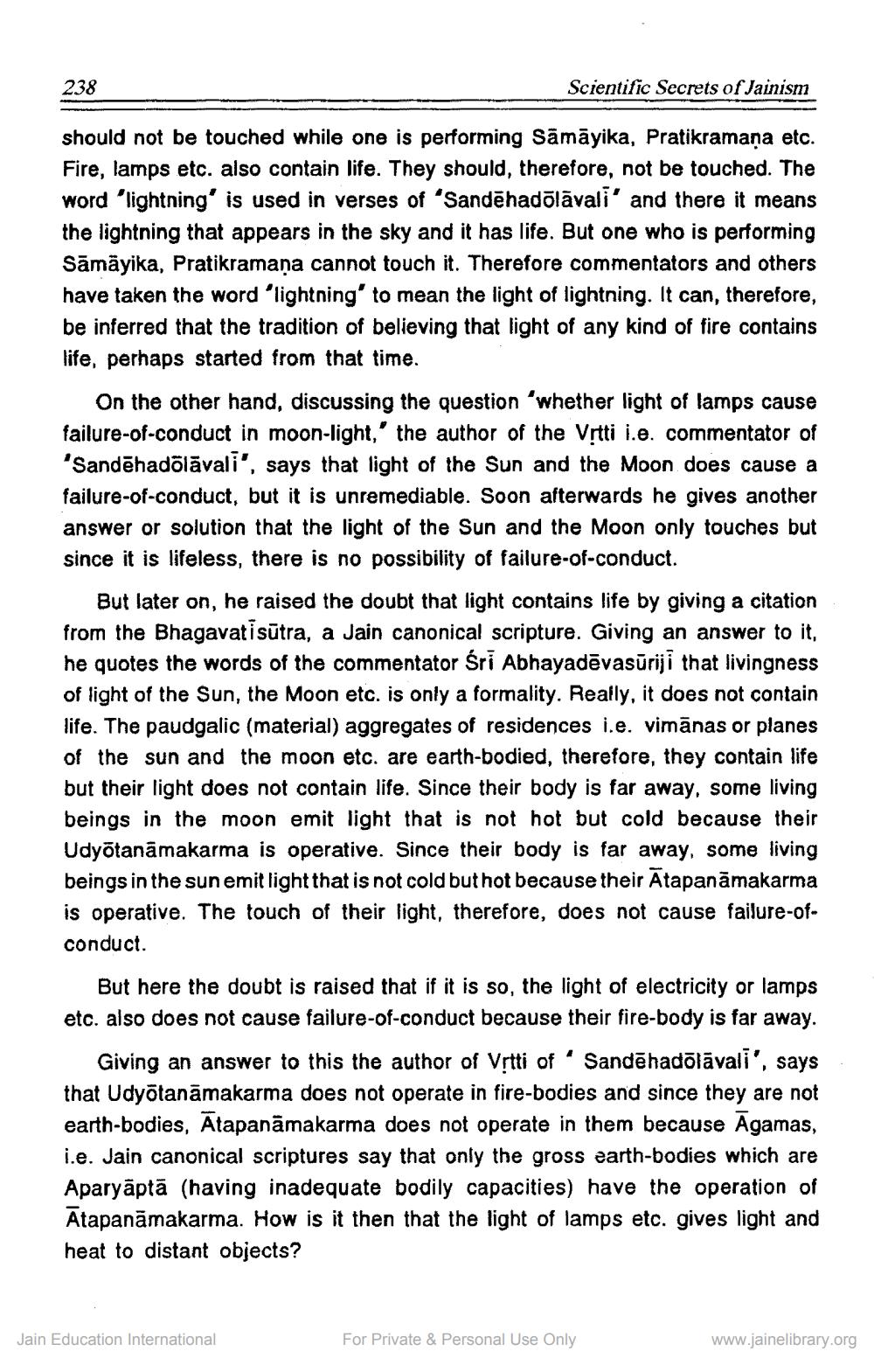________________
238
Scientific Secrets of Jainism
should not be touched while one is performing Sāmāyika, Pratikramana etc. Fire, lamps etc. also contain life. They should, therefore, not be touched. The word 'lightning' is used in verses of 'Sandēhadolāvali' and there it means the lightning that appears in the sky and it has life. But one who is performing Sāmāyika, Pratikramana cannot touch it. Therefore commentators and others have taken the word 'lightning' to mean the light of lightning. It can, therefore, be inferred that the tradition of believing that light of any kind of fire contains life, perhaps started from that time.
On the other hand, discussing the question 'whether light of lamps cause failure-of-conduct in moon-light,' the author of the Vrtti i.e. commentator of 'Sandēhadölāvali', says that light of the Sun and the Moon does cause a failure-of-conduct, but it is unremediable. Soon afterwards he gives another answer or solution that the light of the Sun and the Moon only touches but since it is lifeless, there is no possibility of failure-of-conduct.
But later on, he raised the doubt that light contains life by giving a citation from the Bhagavatisūtra, a Jain canonical scripture. Giving an answer to it, he quotes the words of the commentator Sri Abhayadēvasūriji that livingness of light of the Sun, the Moon etc. is only a formality. Really, it does not contain life. The paudgalic (material) aggregates of residences i.e. vimānas or planes of the sun and the moon etc. are earth-bodied, therefore, they contain life but their light does not contain life. Since their body is far away, some living beings in the moon emit light that is not hot but cold because their Udyotanāmakarma is operative. Since their body is far away, some living beings in the sun emit light that is not cold but hot because their Atapanāmakarma is operative. The touch of their light, therefore, does not cause failure-ofconduct.
But here the doubt is raised that if it is so, the light of electricity or lamps etc. also does not cause failure-of-conduct because their fire-body is far away.
Giving an answer to this the author of Vrtti of 'Sandēhadolāvali', says that Udyotanāmakarma does not operate in fire-bodies and since they are not earth-bodies, Atapanāmakarma does not operate in them because Agamas, i.e. Jain canonical scriptures say that only the gross earth-bodies which are Aparyāptā (having inadequate bodily capacities) have the operation of Ātapanāmakarma. How is it then that the light of lamps etc. gives light and heat to distant objects?
Jain Education International
For Private & Personal Use Only
www.jainelibrary.org




